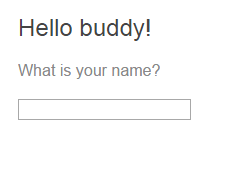Angular 2 Modules - the breaking changes in RC5
Modules
You can think of Angular 2 Modules as some sort of containers that wrap our application.
If you are just starting to learn Angular 2, you will find this very intuitive, if not …

In our application we should have a root module, called AppModule, cointaining all of the required information that we need to run the app.
In this module we need to import and declare all of the directives and pipes that we will going to use in the components binded to it.
import { NgModule } from '@angular/core';
import { BrowserModule } from '@angular/platform-browser';
import { AppComponent } from './app.component';
@NgModule({
imports: [ BrowserModule ],
declarations: [ AppComponent ],
bootstrap: [ AppComponent ]
})
export class AppModule { }
BrowserModule
This module registers service providers and includes directives such as NgIf and NgFor (which we used to use without importing anything, so be careful not to forget that)
@NgModule Decorator
With this decorator we introduce services that can be used by any component, we also can wrap up some components, decorators and pipes together and import other modules as well.
Let’s take a look at what we have so far:
First we declared our AppModule.
The next thing is to create our AppComponent, where nothing special happens.
import { Component } from '@angular/core';
@Component({
selector: 'my-app',
template: `
<h2>Hello buddy!</h2>
`
})
export class AppComponent {}
Add another component
Whe you want to extend your application and add another component, you need to do 3 things:
- To import your new component in the app component
- To import your new component in the app module
- To declare it in @NgModule decorator
Now, we are going to create FormComponent, doing the following:

Back in our ‘App Component’ the only difference is importing the FormComponent:
import { Component } from '@angular/core';
import { FormComponent } from 'app/form.component'
@Component({
selector: 'my-app',
template: `
<h2>Hello buddy!</h2>
`
})
export class AppComponent {}
The FormComponent looks like this:
import { Component } from '@angular/core';
@Component({
selector: 'my-form',
template: `
<div>What is your name?</div><br>
//Here we are using two-way binding of the name property to the input
<input type="text" [(ngModel)]="name">
<br><br>
//NgIf directive will show the div below based on whether the name property
//has a value or not
<div *ngIf='name'>Nice to meet you, !</div>
`
})
export class FormComponent {
public name: string;
}
However if you only create this FormComponent and update the AppComponent file, your application will not work.
We need to state that we are going to use our FormComponent in the App Module by importing it the same way as the AppComponent and declare it in declarations:
import { NgModule } from '@angular/core';
import { BrowserModule } from '@angular/platform-browser';
/* App Root */
import { AppComponent } from './app.component';
import { FormComponent } from './form.component';
@NgModule({
imports: [ BrowserModule ],
declarations: [ AppComponent, FormComponent ],
bootstrap: [ AppComponent ]
})
export class AppModule { }
})
And yet, if you try to run this code it will not work, because we have used the directive ngModel, which according to RC5, needs to be imported in the ‘App Module’:
import { NgModule } from '@angular/core';
import { BrowserModule } from '@angular/platform-browser';
import { FormsModule } from '@angular/forms';
/* App Root */
import { AppComponent } from './app.component';
import { FormComponent } from './form.component';
@NgModule({
imports: [ BrowserModule, FormsModule ],
declarations: [ AppComponent, FormComponent ],
bootstrap: [ AppComponent ]
})
export class AppModule { }
You can find live example here.
Hope you enjoyed this article.
Stay tuned and follow me on twitter :)
